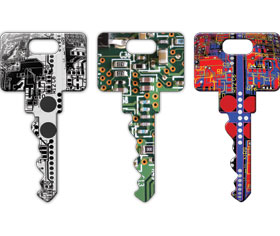

Although the frequency of a cyber-security attack on a large scale is low, by 2018, 40% of large organisations will have formal plans to address aggressive cyber-security business disruption attacks, up from 0% in 2015, according to Gartner. Business disruption attacks require new priority from chief information security officers (CISOs) and business continuity management (BCM) leaders, since aggressive attacks can cause prolonged disruption to internal and external business operations.
“Gartner defines aggressive business disruption attacks as targeted attacks that reach deeply into internal digital business operations with the express purpose of widespread business damage,” said Paul Proctor, vice president and distinguished analyst at Gartner. “Servers may be taken down completely, data may be wiped and digital intellectual property may be released on the Internet by attackers.
“Victim organisations could be hounded by media inquiries for response and status, and government reaction and statements may increase the visibility and chaos of the attack. Employees may not be able to fully function normally in the workplace for months. These attacks may expose embarrassing internal data via social media channels – and could have a longer media cycle than a breach of credit card or personal data.”
To combat these types of attacks, CISOs must pivot approaches from blocking and detecting attacks, to detecting and responding to attacks.
“Entirely avoiding a compromise in a large complex organisation is just not possible, so a new emphasis toward detect and respond approaches has been building for several years, as attack patterns and overwhelming evidence support that a compromise will occur,” said Proctor. “Preventive controls, such as firewalls, antivirus and vulnerability management, should not be the only focus of a mature security programme. Balancing investment in detection and response capabilities acknowledges this new reality.”
The rise of ubiquitously connected devices and the Internet of Things (IoT) has expanded the attack surface, and commands increased attention, larger budgets and deeper scrutiny by management. Digital business should not be restricted by these revelations, but emphasis must be placed on addressing technology dependencies and the impact of technology failure on business process and outcomes. Information owners should be made explicitly accountable for protecting their information resources, ensuring they will give due consideration to risks when they commission or develop new digital business solutions.
The expectation that digital business will be a successful consumer business model relies on IoT devices being always available. An interruption at any point during the end-to-end transaction process means that business transactions may not be completed, thereby negatively affecting customer allegiance and the revenue stream expected from the digital business offering.
As a result, the standard of due care for security programme maturity will increase, with risk, security and BCM leaders getting more pressure and more support from executive boards than ever before. Executive boards have increased their attention on cyber security since 2012, but new revelations of business disruption attacks provide a fresh opportunity to build the new business case for cyber-security investment and institutionalise more-proactive thinking about cyber-security risks.
“CISOs and chief risk officers (CROs) can and should persuade executives to shift their thinking from traditional approaches toward risk, security and business continuity management. Security is not a technical problem, handled by technical people, buried somewhere in the IT department,” said Proctor. “Organisations need to start solving tomorrow’s problems now.”
Additional details on business disruption attacks will be discussed at the Gartner Security & Risk Management Summit 2015 taking place on 14-15 September in London. More information on the event is at http://www.gartner.com/technology/summits/emea/security/

© Technews Publishing (Pty) Ltd. | All Rights Reserved.